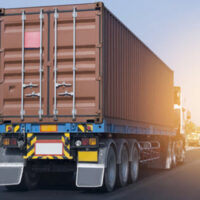How Will Proposed Safety Measures Affect California Truck Accidents?

Reducing the number of fatal and injury-causing truck accidents is one of the most important tasks of the Federal Motor Carrier Safety Administration (FMCSA), so data is central to the agency’s safety measures and public awareness campaigns. Unfortunately, statistics reported in the Commercial Motor Vehicle Traffic Safety Facts reveals that there is far to go. Deaths from truck crashes rose 8 percent from 2016 to 2017, and the risks are even more profound for residents around the Bay Area: California is 1 of 10 US states with the highest averages of deadly truck collisions from 2015 to 2017.
To support FMCSA initiatives, various players in the trucking industry have proposed new safety initiatives aimed at reducing the frequency of crashes and the tragic implications for victims. You should discuss legal issues with an Oakland truck accidents attorney if you were involved in a collision, but some information on the safety proposals may be helpful.
Automatic Emergency Braking (AEB): Much like the equivalent technology in newer automobiles, AEB will apply the brakes to slow or stop the truck tractor when it detects a threat or changes in traffic. Many US trucking companies have installed this equipment on their entire fleet of trucks, but the FMCSA and other federal agencies have not yet made it mandatory. Based upon the current state of technology, this safety feature could prevent more than 2,500 truck crashes every year; the next-generation AEB systems could double or triple this number.
Speed Limiting Equipment: Another safety feature that is available but not yet a requirement, this technology does just what the term indicates: The system incorporates a governor on the truck’s engine controls, preventing the engine from burning fuel above a certain level – thereby making it literally impossible for the truck operator to speed.
Underride Guards: An underride crash is a horrific incident, where the smaller automobile slides under the truck tractor and/or trailer upon impact. Underride guards can prevent this event from occurring, and they can be installed:
- On the front and sides of the tractor; and,
- Around the perimeter of the trailer.
The guards serve to absorb the energy of the collision and defect the passenger vehicle away. The FMCSA and other agencies have not made this safety equipment mandatory.
Truck Accident Insurance Coverage: While not a safety measure, higher insurance coverage requirements would benefit truck accident victims and their families. Currently, truck drivers are required to carry a minimum of $750,000 in insurance coverage – a mandate established by a 40-year-old regulation. There have not been any adjustments for inflation or the increase in truck accidents, so proponents say it is time to revisit this amount.
Our Oakland Truck Accident Lawyers Will Protect Your Interests
These proposals look promising for reducing deadly truck collisions, but they will not completely eliminate the threat. If you were hurt or lost a loved one in such an accident, our team at Venardi Zurada, LLP can assist with your legal remedies. Please contact our firm today to set up a free consultation with an Oakland truck accidents attorney. We serve personal injury victims throughout Northern California from our offices.
Resource:
cms8.fmcsa.dot.gov/sites/fmcsa.dot.gov/files/docs/safety/data-and-statistics/473411/cmvtrafficsafetyfactsheet2018.pdf

 The Official Injury Attorneys of the San Francisco 49ers
The Official Injury Attorneys of the San Francisco 49ers